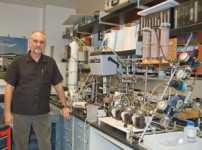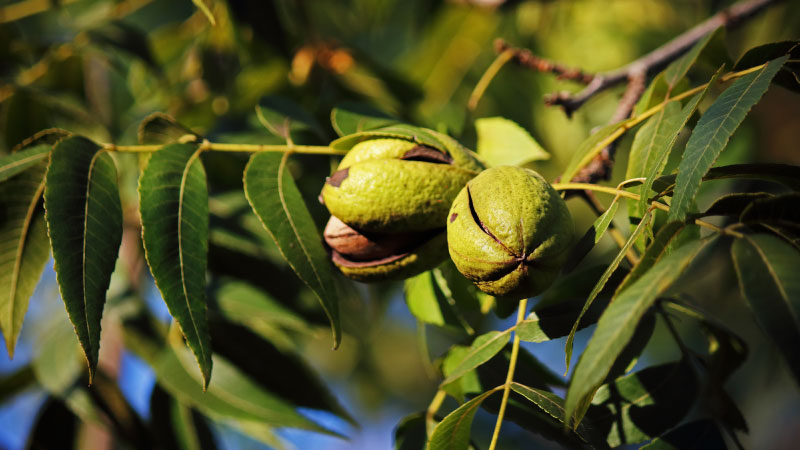A Fresh Start

Recently, USDA’s Animal and Plant Health Inspection Service (APHIS) announced amendments to its citrus canker regulations that would allow fruit from quarantined areas to be shipped to all U.S. states, based on new scientific research which shows that mature fresh fruit is not a good vehicle for the spread of canker.
Dr. Tim Gottwald, research leader of plant pathology at USDA’s Horticultural Research Laboratory in Ft. Pierce, led the effort to build research data to support the new APHIS rules. The research Gottwald developed with a team of other citrus scientists from around the world showed that it is highly unlikely that the disease can be spread by harvested fruit with or without canker symptoms. Fruit with symptoms was shown not to spread the disease when treated with approved disinfectant at the packinghouse.
A study by Dr. H. Shiotani et al., which showed the poor survival of the canker bacteria on commercially produced mandarins and the low likelihood of canker spread on harvested mandarins, was also used as justification by USDA for their rule change.
High Costs
“The impact of restricted market access is one that drastically changed the way we conduct business and added untold tangible and intangible costs to our growers and affiliated industries,” says Dan Richey, a grower who has played a key role in working with USDA and industry for the proposed rule change. He also is the 2007 Florida Grower Citrus Achievement Award winner. (Read the story) “These impacts range the full scope from lost or restricted markets to almost doubling our grove care costs annually.”
“Removing the requirement for APHIS inspectors could have a positive effect on greening research, as this may present us an opportunity to request a reallocation of funds currently appropriated to canker regulations. It is a little premature to raise that expectation, but it is potentially a positive result of the scientific research that proves movement of fruit is not a threat to spread canker disease. Everything we propose regarding loosening or tightening phytosanitary regulations must be rooted in science only. We cannot allow politics or personal preference to invade this process”
Canker Consortium
As fewer canker-free blocks were available, the industry decided that a much deeper understanding was necessary of the biology of canker. That’s when Richey approached Gottwald about the need to know more about canker, how it spreads, and the role, if any, harvested fruit might play.
“The best way to do this was to put together a group of international scientists who are leaders on working with citrus canker,” says Gottwald. “And, to do this by including researchers from various states and countries that have citrus canker and those that don’t.
“We put this group together such that we all had a part in designing the experiments, running them, and having oversight of them. We also all had oversight in the interpretation of the data. So all of us were in agreement in the end. This resulted in a fairly strong consortium of international scientists who all stood behind the work. Thus, when it was published, it formed a solid scientific foundation.”
The 15 scientists on the team came from Florida, Texas, California, Brazil, Argentina, and Europe.
“I did tell Dan at the time he approached me that the data we will collect is what it is, so whatever we find is what we will publish,” says Gottwald. “And, I can’t guarantee that it will be positive or negative. We agreed to this and we moved on. But, I did have a fairly good inkling of what we would find because I have worked with this disease for 25 years.
“The study had multiple experimental parts, which we conducted, analyzed, and interpreted. The overall result was that fruit is a poor pathway for moving canker around. As citrus fruit matures and colors up as they are removed from the tree, the physiology of the fruit changes and it is no longer a good substrate or host for the bacteria to survive or multiply at that point. The bacteria in the lesions of colored and harvested fruit decline through time postharvest.”
Team Effort
“This has really been a focused industry-wide effort to get this draft rule done,” says Sparks. “Dan Richey, the Florida Citrus Packers, Doug Bournique, Dr. Tim Gottwald, and a host of others in the fresh Florida citrus industry came together, and we believe we have a good start with this draft rule.”
“Richard Kinney and Steven Callaham at Florida Citrus Packers deserve a lot of credit,” adds Richey. “Under Steven’s leadership as president of the Florida Citrus Packers, and Richard Kinney’s passionate ‘bulldog’ approach to the details, was this objective achieved. They deserve a lot of recognition for their efforts.”
“Tim’s cutting edge research clearly shows that symptomatic fruit is not a pathway to spread canker,” says Doug Bournique, executive director of the Indian River Citrus League. “This rule will provide Indian River citrus growers with much needed relief in fresh fruit markets.”
Sparks adds he hopes the new rule will be approved and in effect by the start of the 2009/2010 season.










